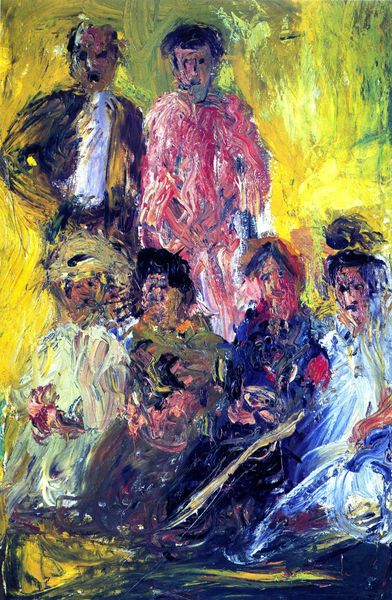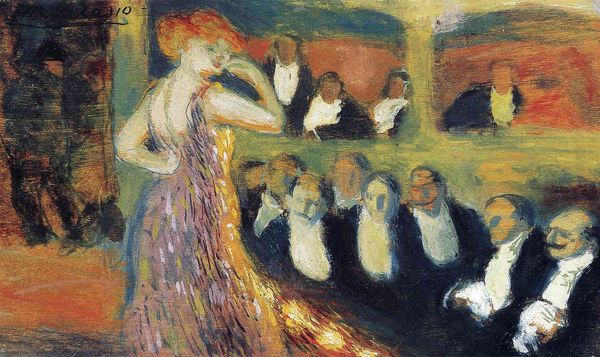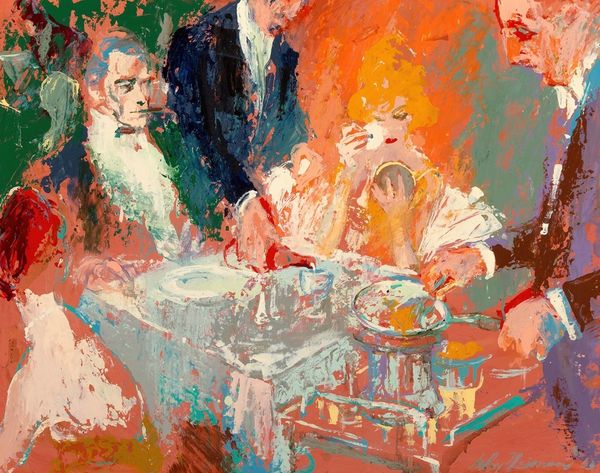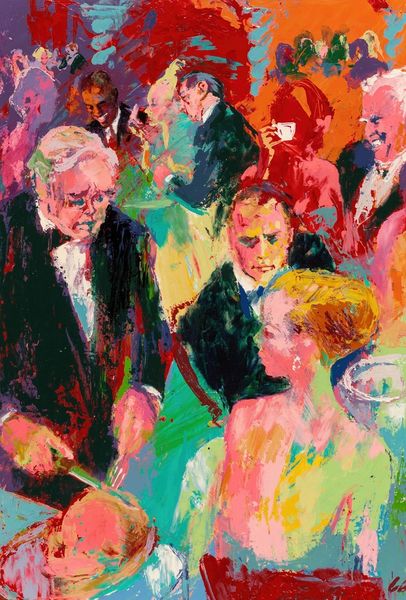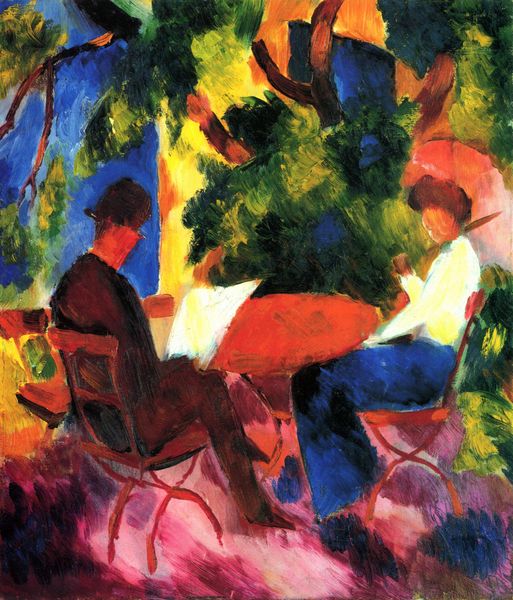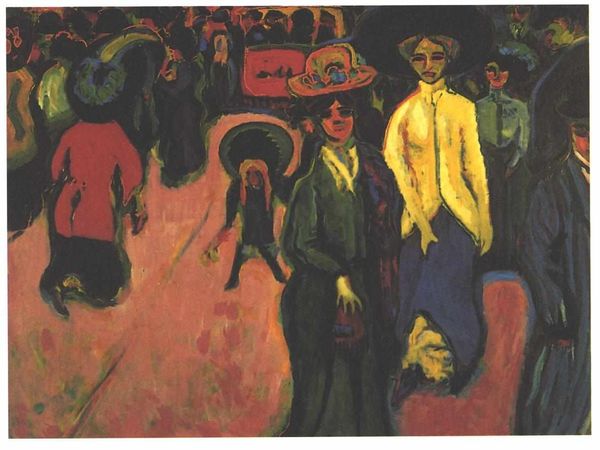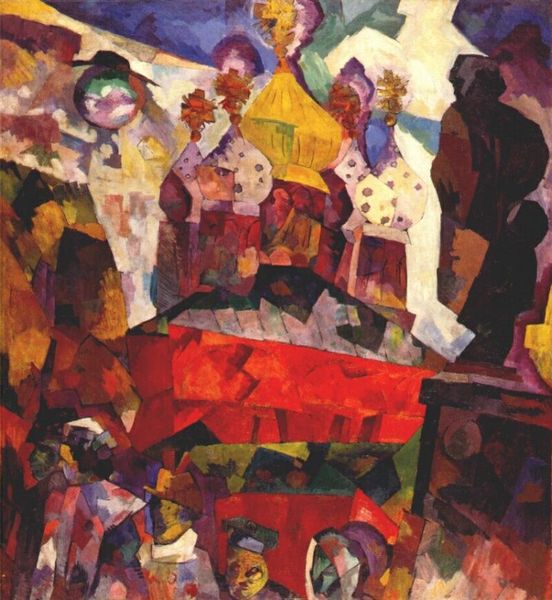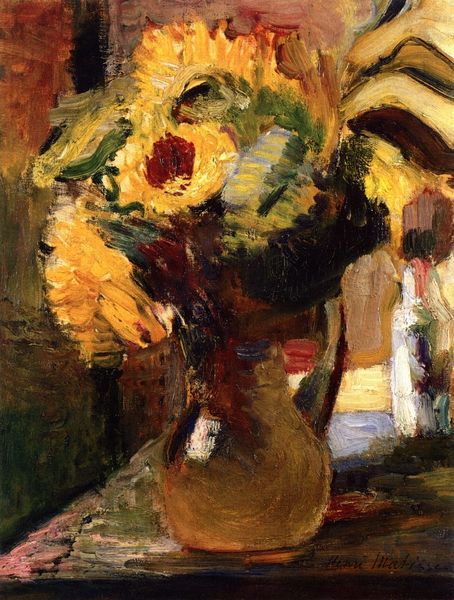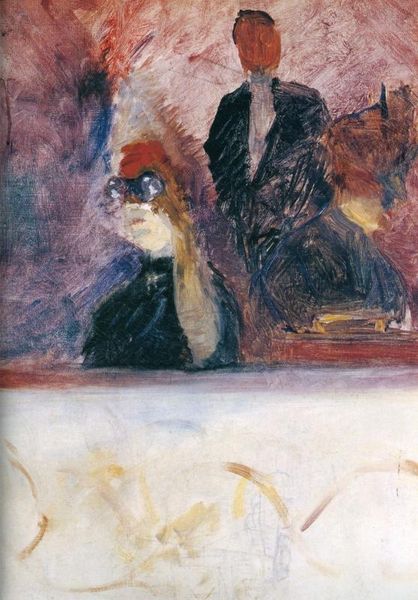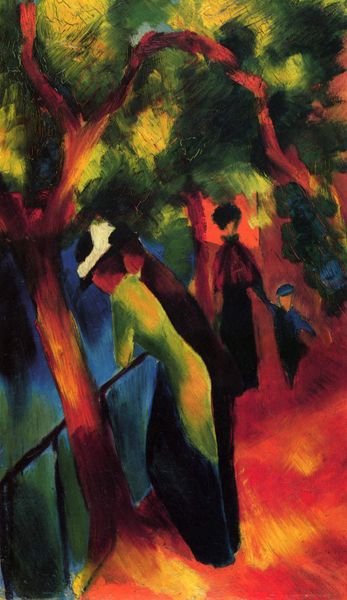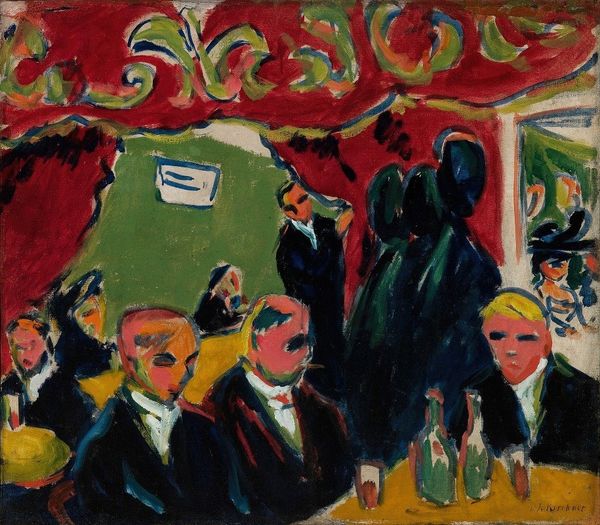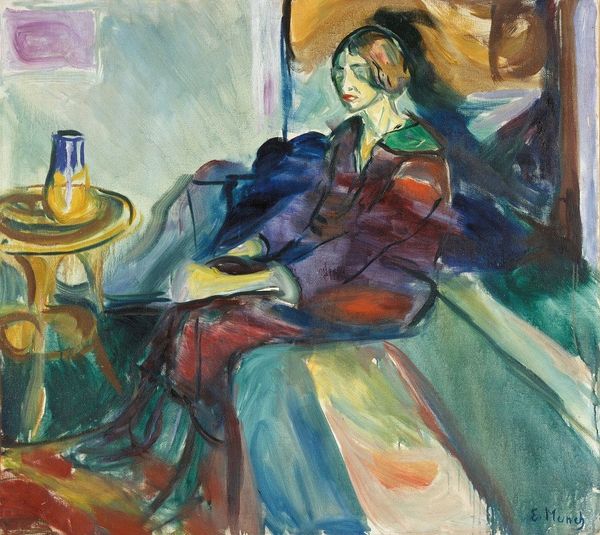
painting, oil-paint, impasto
#
portrait
#
painting
#
oil-paint
#
german-expressionism
#
oil painting
#
impasto
#
neo expressionist
#
group-portraits
#
expressionism
#
genre-painting
#
expressionist
Copyright: Public domain US
Curator: Oh, look at this—"At the Café" by Emil Nolde, painted in 1911. What's your gut reaction? Editor: Claustrophobia, mostly. All that warm orange, the figures jammed together, those feverish strokes… It feels less like a pleasant outing and more like a psychic pressure cooker. Curator: Well, that intensity is definitely Nolde’s signature. As a leading figure of German Expressionism, he was all about raw emotion and inner experience, pushed to the extreme. He wasn't just depicting a scene; he was externalizing feelings. Editor: Exactly! And you really get that with his aggressive brushwork. You can practically feel him stabbing at the canvas. It's interesting how the colours, even though bright, don't lighten the mood; instead, they intensify the feeling of discomfort. Who are these people? Are they even enjoying each other’s company? Curator: We can only speculate, really. Genre paintings like this offered artists a chance to explore social dynamics. Cafés, especially then, were fascinating places, melting pots for different social classes and ideas. Nolde doesn't give us many clues, though. Everyone is sort of masked by those thick, almost violent strokes of paint. Editor: There's something performative about it. Are they putting on a show for each other, or for themselves? The figure in the foreground in the formal suit has a calculated, predatory feel; whereas those next to him look like they’re morphing into one another in the fug of social exchange, a hazy mass. Curator: Nolde’s impasto technique—that thick application of paint—adds to this unsettling effect, making everything almost tactile and disturbingly present. It’s hard to look away, isn’t it? The emotional tension pulls you in. Editor: It does. Despite the garishness, the tension draws you closer. Nolde captured an essential, enduring truth about those staged social spaces, full of hidden tensions, underneath superficial pleasure. The picture continues to show uncomfortable truths in a remarkable way. Curator: Yes, its remarkable power lies in that visual language that bypasses the intellect and plunges straight into the raw core of human emotion. And it makes you feel…alive, somehow.
Comments
No comments
Be the first to comment and join the conversation on the ultimate creative platform.
